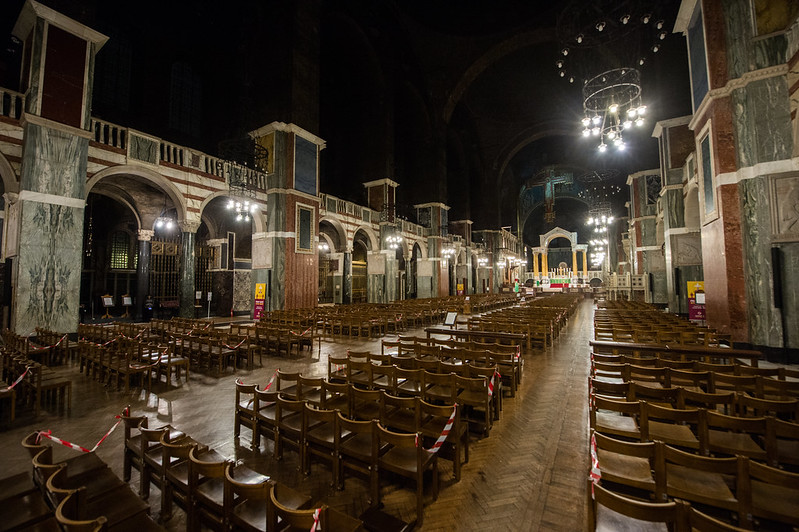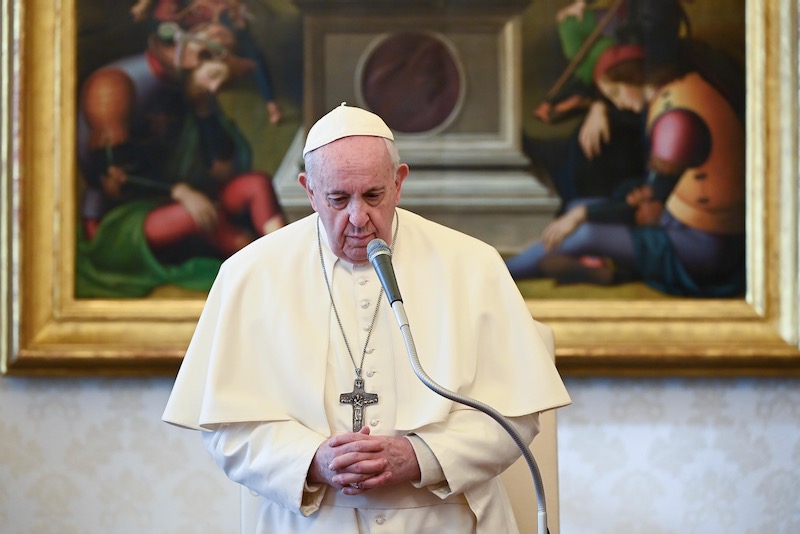Those who reject the teaching of the Second Vatican Council are placing themselves outside the Church, Pope Francis has said.
Francis’ remarks are his strongest criticism yet of Catholics who have called Vatican II into question including some “conservative” Catholics who oppose the direction of his pontificate.
“Either you are with the Church and therefore you follow the council, or you interpret it in your own away – according to your desire – [and] you do not stand with the Church,” the 84-year-old Jesuit Pope told members of the National Catechetical Office of the Italian Bishops’ Conference.
The Pope has pledged to implement the reforms of the 1962-65 council, the gathering of bishops that sought to reinvigorate the Church. The council aimed to open a dialogue with the contemporary world and other religions and connect Catholicism more firmly with its Gospel roots. It sought a vision of the Church on the side of the marginalised speaking prophetically about the “joys and hopes, the griefs and anxieties” of all people.
“I know that the Lord wants the Council to make headway in the Church,” Francis said in 2018. “Historians tell us that it takes 100 years for a Council to be applied. We are halfway there.”
During the Francis pontificate, the noisiest dissenters to the council’s vision have come from conservative quarters, including figures such as Archbishop Carlo Maria Viganò, the retired papal diplomat who in 2018 called on the Pope to resign. Viganò has said the bishops who took part in Vatican II were the “object of a sensational deception, of a fraud” and has described it as “the abdication of the Catholic Church”.
But in his speech on 30 January, the Pope said the council “must not be negotiated” and that on this point “we must be demanding, strict”.
Warning against a mentality which says “we are the true Catholics”, he cited those believers who split from the Roman Church following the First Vatican Council (1869-70) over the teaching on papal infallibility, and are part of the “Old Catholic Church”. Francis said that today this group ordains women, which runs contrary to official Catholic teaching.
The years that followed Vatican II saw an intense debate over how to implement the council which had been called by John XXIII. While all subsequent popes sought to follow its mandate, many in the Church who were enthused by the spirit of renewal that it unleashed became disheartened during St John Paul II and Benedict's papacies XIV. They felt that Rome was reasserting control, and too narrowly defining the council’s implementation.
But the challenge that the teaching of Vatican II faces in the Francis era is not from “liberal dissenters” trying to push it further than the council fathers had in mind, but from those who question the wisdom of the Council at all, or want to so re-interpret it that it would lose its impetus. These neo-traditionalists are among the most vocal opponents of the Francis pontificate.
As a result, some in Rome see this pontificate has the “third phase” of Vatican II's implementation, after two pontificates where conciliar reforms were pursued more cautiously. While the late English cardinal Cormac Murphy-O’Connor said John Paul II and Benedict kept their fingers on Vatican II's “pause” button, Francis has pressed play.
Much of this is informed by how the council was received in Latin America which, according to Church historian Massimo Faggioli, “was an important moment in the history of liberation from European, colonial Catholicism”.
Post-conciliar Catholicism in Latin and Central America saw the flourishing of liberation theology, placing the Gospel at the service of the poor. Towering figures emerged during this period, such as St Oscar Romero of El Salvador. Archbishop Romero was shot dead in 1980 while saying Mass after speaking out against the oppressive Salvadorean regime, and is sometimes described as a “martyr of the Church of Vatican II”.



 Loading ...
Loading ...